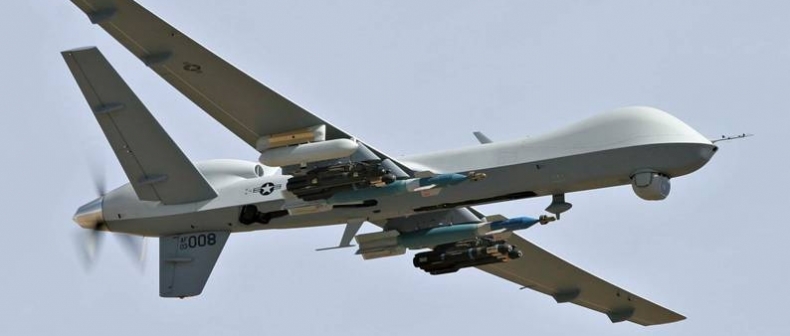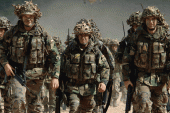
This is the third in a series of five articles focusing on the experience of a Canadian counter-terrorism analyst at a NATO seminar in Denmark, to discuss the future of national security and how NATO intends to respond to emerging threats around the world.
There are several pressing issues facing NATO’s procurement of drone technologies to meet its need for a sustainable strategic advantage and sophisticated operational capability. Despite the obvious tactical benefits, the strategic, moral and political implications of new warfare technologies and need to be factored into our cost-benefit analysis.
Needs and Benefits
Over the last 20 years, countries have been investing heavily in the use of drone technology, cyber capabilities, communications and logistics equipment. Several other new and cutting-edge devices have been designed to monopolize NATO’s strategic edge over any challengers.
With money spent on computer networks, sensors, precisions weapons and early warning capabilities; the sophistication and use of technology in warfare is at an all time high and will continue with this trend.
The rationale is simple. A more sophisticated warfare capability reduces exposure to casualties, strengthens deterrence, and lowers the risk of inadvertently killing civilians. Since NATO must maintain an ability to anticipate, sense and shape its own security environment, the use of these technologies fits into NATO’s wider strategic goals of reducing its own footprint while increasing its presence in ungoverned spaces, or hostile territories.
The Trends
Having been around since the Vietnam War, drones have maintained an operational presence in warfare for roughly four decades. Since 1991, drones have received far more attention and have become the primary recipient of funding, recruitment, research and development in various U.S. administrations.
Recent trends worth noting are: drones have become the preferred method of warfare by the Obama administration, which has killed roughly 2,000 people in Afghanistan through these attacks since being elected. Second, the trend in design has been to use nanotechnology to make drones smaller and more evasive. More people are training to be drone pilots now than regular pilots.
The speed at which new drone technology is being developed represents a significant trend in defence industries around the world. Currently, the U.S.’ primary drone is the Reaper, but its favourite drone is the Raven. This will change when the X45 (which can fly by itself) is fully developed, but for now, new drone technologies with precision strike capabilities are clearly set to be the enduring trend in military procurement.
Although widely viewed as overpriced, the reality is that the truly expensive part about drones is hiring the people to operate them. The average drone requires roughly 21 people to process intelligence, fly the drone and maintain its operational capability. Moreover, the cost of office space, air conditioning, and pension plans all help run up the tab. Despite these costs, drones represent the wider trend of states wanting to “robotize” their militaries and limit deployment or exposure.
The Fallout
Despite the obvious strategic benefits, briefings focused on two consequences of drone warfare. First, the moral dilemma of removing human contact from the battlefield. Second, the access of drones to non-state actors and terrorist groups.
Removing human contact from the battlefield creates a fundamental disconnect between opposing forces. Traditionally, the carnage and destruction of warfare was felt deeply by soldiers on the field. Since drone strikes in Afghanistan can be carried out by a small group of soldiers operating out of Nevada, contact and familiarity with the battlefield is reduced and the consequences of warfare are felt much less and in some cases, not at all.
Regarding the transition of drones to non-state actors, this is seen as an inevitable consequence of drone procurement. Since drones are cheap and easily accessible (roughly $700 for a standard surveillance drone), it is certain that terrorist and insurgent groups will seek to procure these devices in order to maintain some level of strategic parity. So far, terrorist organizations such as Hezbollah are known to use drones against their enemies, while groups such as the FARC in Colombia have attempted to procure them through its contacts on the black market. Although it is unlikely that these groups attain advanced drones with precision strike capabilities, the potential for this happening in the future cannot be ruled out.
Conclusions
As the new cutting edge technology in modern warfare, drones represent the drive towards effective risk management in times of asymmetrical conflict. With investment and procurement set to increase, drones will likely be seen as the “need to have” technology for militaries operating across the globe. Since the threat environment shifts rapidly and has a tendency to spill across borders, drones will be a critical tool to observe, report and neutralize threats around the world.
Regardless of the financial and ethical costs, drones are the wave of the future and will continue as such.
—
Jason Wiseman is a Senior Counter-Terrorism Analyst. He writes about foreign affairs.
For more, follow us on Twitter at @TorontoStandard and subscribe to our newsletter.














